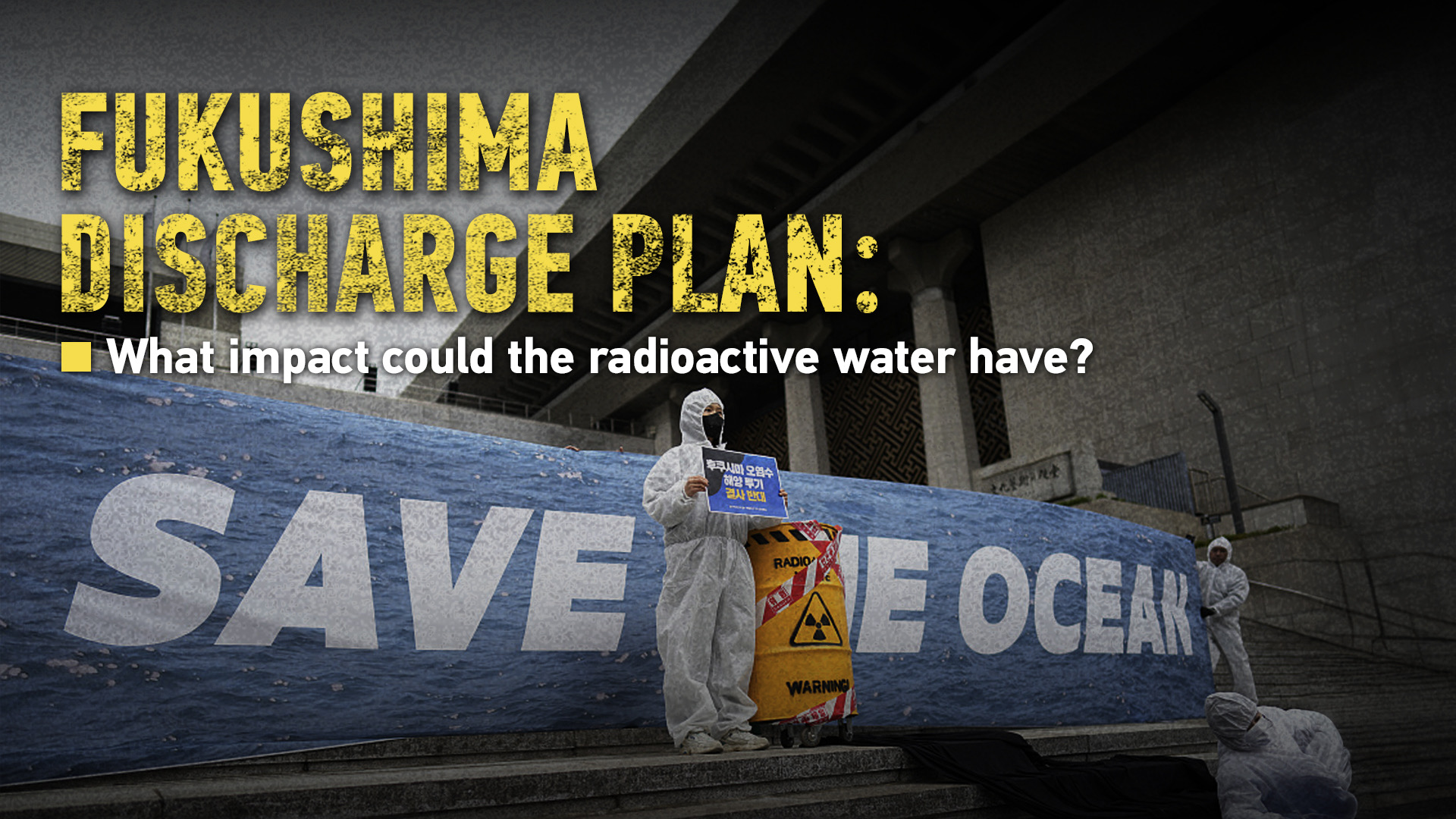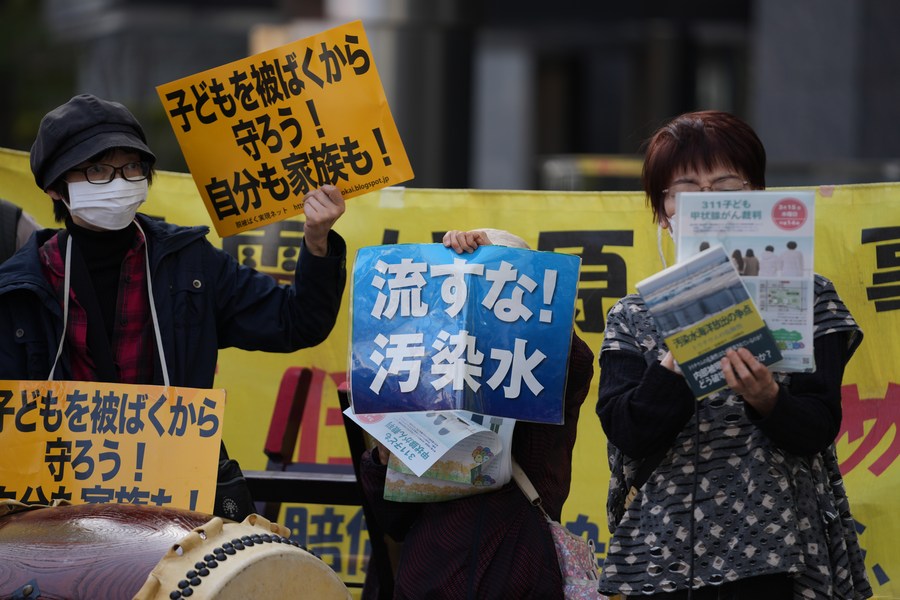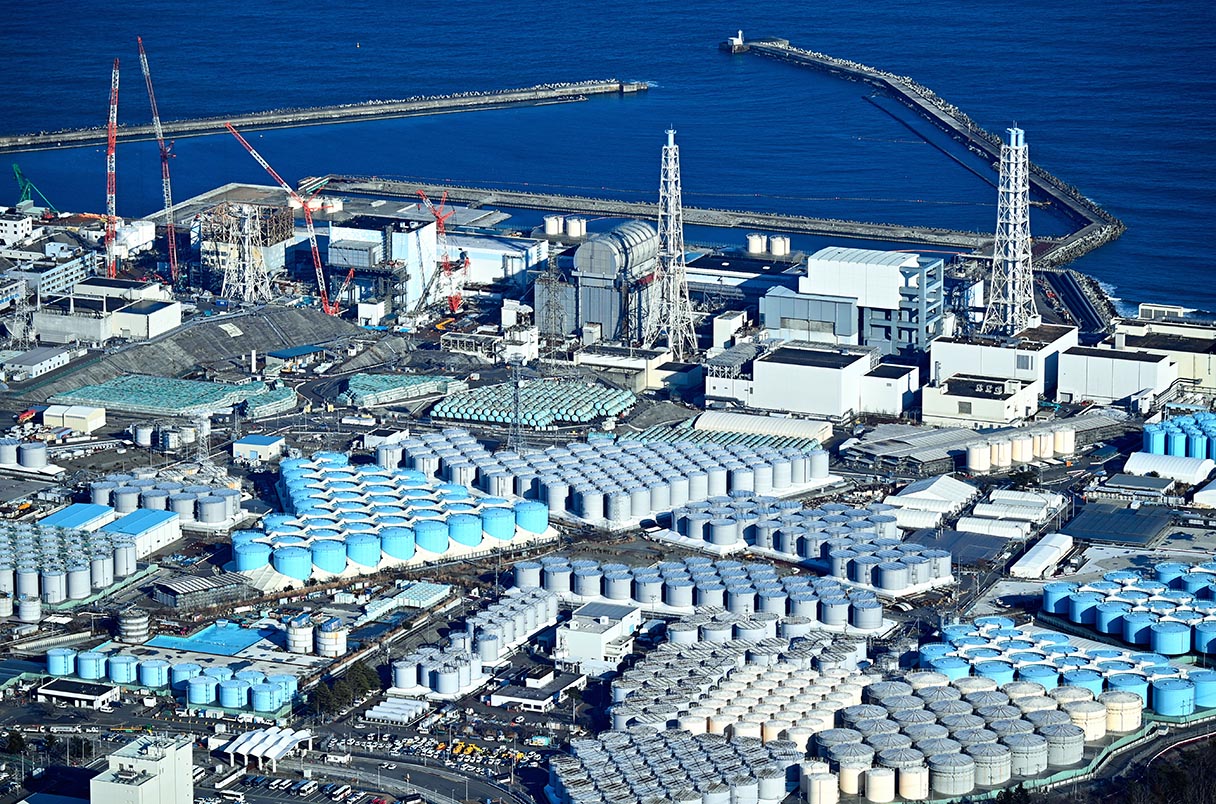
Editor's Note: In this three-part series, CGTN aims to shed light on Japan's contentious decision to release treated radioactive water from the tsunami-ravaged Fukushima Daiichi nuclear plant into the ocean. Tokyo has announced that it will proceed with its plan as early as August despite overwhelming concerns among environmentalists, scientists and neighboring countries. In this part of the series, CGTN shows the anxiety, anger and damage caused by the Fukushima discharge plan and long-time doubts and criticism about TEPCO.
The International Atomic Energy Agency (IAEA) on Tuesday declared that Japan's plans to release treated radioactive water from the Fukushima nuclear plant into the Pacific Ocean were consistent with international safety standards, but growing anger and fear among the global community continues.
Japan's planned discharge of the nuclear-contaminated water will pose a serious threat to the world's oceans, lawmakers from South Korea's main opposition Democratic Party warned on Thursday.
"Many experts believe that the release of contaminated water into the ocean is an unprecedented event in history and will have a devastating impact on the health and lives of current and future generations," Wi Seong-gon, a Democratic Party lawmaker and chief of the party's prevention committee on the release of Fukushima nuclear wastewater, told a press conference.
The IAEA's report on the discharge cannot give Japan immunity for the release of contaminated water into the sea, as the report failed to verify the performance of the advanced liquid processing system (ALPS) and examine the long-term impact of the discharge on the marine ecosystem, Wi noted.

People protest against the Fukushima discharge plan near the headquarters of TEPCO in Tokyo, Japan, March 11, 2023. /Xinhua
People protest against the Fukushima discharge plan near the headquarters of TEPCO in Tokyo, Japan, March 11, 2023. /Xinhua
A day earlier, nearly 100 Japanese protesters gathered in front of the headquarters of Tokyo Electric Power Company (TEPCO) to rally against Japan's discharge plan, expressing their grave concern over the safety standards of TEPCO and the final report by the IAEA.
Protesters from several local civic groups displayed placards that read "Do not discharge contaminated water into the sea" and "Do not pollute our oceans."
"TEPCO's so-called safety standards were fundamentally flawed," a protester surnamed Yamazaki said, adding that there were no limitations on the total amount of nuclear-contaminated water to be discharged into the ocean, and the existing regulations on radioactive substance concentration were too lenient.
Long-lasting criticism about TEPCO
In fact, TEPCO has been widely criticized for repeated missteps, poor planning and a poor record of concealing and tampering with information in its efforts to clear up the site of the country's nuclear disaster.
According to openly available reports, TEPCO admitted in 2007 that it had falsified data to cover up reactor failures during government inspections on 199 occasions since 1977. It was slow in dealing with the aftermath of the Fukushima nuclear accident, citing various reasons.
For example, in August 2013, under intense public pressure, TEPCO admitted that about 300 tonnes of high-concentration nuclear contaminated water leaked from the steel tank, and some of it may have flowed into the Pacific Ocean.
On April 14, 2021 Japan's Nuclear Regulation Authority made an official decision to prohibit the operation of TEPCO's Kashiwazaki-Kariwa Nuclear Power Plant due to multiple failures and improper disposal of nuclear material protection facilities. Prior to that, there had been many incidents arising from faulty management and safety measures of the nuclear power plant.
Critics say that "the Japanese government and TEPCO have not been transparent enough about the treatment process or the planned release," The New York Times reported on Tuesday.

Reactors and tanks storing treated radioactive water are seen at the Fukushima Daiichi Nuclear Power Plant in Okuma, Fukushima, Japan, January 19, 2023. /CFP
Reactors and tanks storing treated radioactive water are seen at the Fukushima Daiichi Nuclear Power Plant in Okuma, Fukushima, Japan, January 19, 2023. /CFP
Immeasurable impact of the plan
According to another report published on June 5, the radioactive elements in the marine fish caught in the harbor of the Fukushima Daiichi Nuclear Power Plant in Japan far exceed safety levels for human consumption.
In particular, the data released show that the content of Cs-137, a radioactive element that is a common byproduct in nuclear reactors, is 180 times that of the standard maximum stipulated in Japan's food safety law.
According to a German marine scientific research institute, with the world's strongest currents along the coast of Fukushima, radioactive materials could spread to most of the Pacific Ocean within 57 days from the date of discharge, and reach all global oceans in a decade.
"There are at least 60 kinds of radioactive elements in the Fukushima's nuclear wastewater and the impacts on human health caused by the plan is immeasurable," Zhang Yanqiang, professor of international law at Dalian Maritime University and director of the Institute for Yellow Sea and Bohai Studies, told CGTN in an interview. He said that Japan's unilateral decision to release the wastewater into the ocean is extremely irresponsible.
"It should be decided by the international law, such as the United Nations Convention on the Law of the Sea and the Convention on the Prevention of Marine Pollution by Dumping of Wastes and Other Matter in 1972. However, Japan's discharge plan has not been authorized by any relevant law and rules," the expert noted.
Read more:
Fukushima discharge plan: an act of 'putting money above human life'?